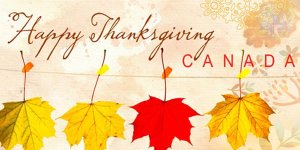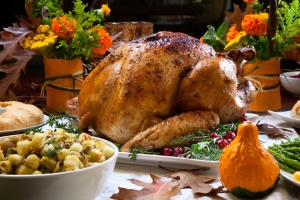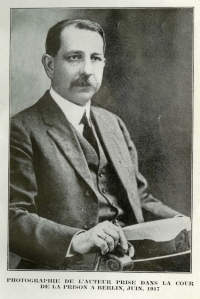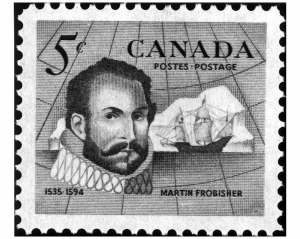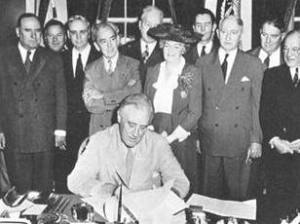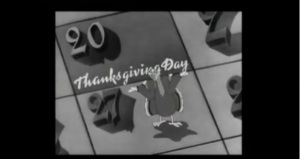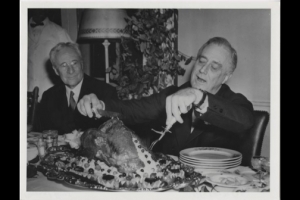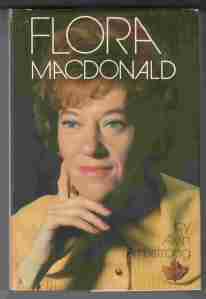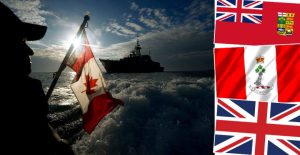 Canada’s flag, the Maple Leaf, was raised for the first time on Parliament Hill on February 15, 1965 – and that was 57 years ago today. Xavier Gélinas, curator of political history at the Canadian Museum of History in Ottawa, notes.
Canada’s flag, the Maple Leaf, was raised for the first time on Parliament Hill on February 15, 1965 – and that was 57 years ago today. Xavier Gélinas, curator of political history at the Canadian Museum of History in Ottawa, notes.
The Canadian Flag or the Maple Leaf Flag, was decided by a vote. A joint committee of the Senate and House of Commons voted for the present flag back in 1964. The final design was taken up by Parliament and approved by a royal proclamation after months of debate.
“It was an epic battle, and entire chapters and books have been written about the process. Not so much about the actual flag itself or the design of the flag, but about the very torturous process in which the design was finally reached,” said Gélinas. “The final act of the drama takes place between the Spring of 1964 and the last days of December 1964. The idea that Canada’s truly distinct national flag had been brewing and simmering with various intensities of heat since the early 20th century,” he added.
“Canada was flying the Red Ensign in 1870,” Canadian Military Family Magazine (https://www.cmfmag.ca/history/february-15th-marks-56th-anniversary-of-our-maple-leaf/) noted last year. “In 1892, merchant vessels registered in Canada flew the Red Ensign with only the four original provinces represented.” Canadian Military Family Magazine, based in Petawawa, Ont., is not officially affiliated with the Canadian Armed Forces or Department of National Defence. “In 1925, Prime Minister William Lyon Mackenzie King proposed the idea of a new national flag. He backed off after his proposal was met with protest against any attack on the Union Jack. He tried and failed again in 1945 with a joint committee of the Senate and House of Commons.”
The 1960’s-era Canada that gave birth to the Maple Leaf flag – a flag of our very own for the first time – is often nostalgically remembered as a time of incredible optimism and possibility, as it was in much of the world. And surely it was. We had our Centennial in 1967 and the International and Universal Exposition, or Expo 67, as it was commonly known, a Category One World’s Fair general exhibition, held in Montréal from April 27 to Oct. 29, 1967. It is considered to be the most successful World’s Fair of the 20th century with the most attendees to that date and 62 nations participating. It also set the single-day attendance record for a world’s fair, with 569,500 visitors on its third day.
Lest we forget, we also had in that same decade and into 1970 the Front de libération du Québec (FLQ). Writing in 2013 in the Canadian Encyclopedia, now known as Historica Canada, Marc Laurendeau and Andrew McIntosh noted FLQ members – or felquistes – were responsible for more than 200 bombings and dozens of robberies between 1963 and 1970 that left six people dead (https://www.thecanadianencyclopedia.ca/en/article/front-de-liberation-du-quebec).
The FLQ was founded in March 1963 by two Québecers, Raymond Villeneuve and Gabriel Hudon, and a Belgian, Georges Schoeters, who had fought with the resistance during the Second World War. “Québec was undergoing a period of profound political, social and cultural change at that time,” wrote Laurendeau and McIntosh, as well as rising unemployment. Members of the FLQ or felquistes – were influenced by anti-colonial and Communist movements in other parts of the world, particularly Algeria and Cuba. They shared a conviction that must liberate itself from anglophone domination and capitalism through armed struggle. Their objective was to destroy the influence of English colonialism by attacking its symbols. They hoped that Québecers would follow their example and overthrow their colonial oppressors.”
Their actions culminated in the 1970 kidnapping of British trade commissioner James Cross and the kidnapping and subsequent murder of Québec cabinet Labour Minister Pierre Laporte, in what became known as the October Crisis.
The escalation of FLQ activities prompted Québec Liberal Premier Robert Bourassa to ask Liberal Prime Minister Pierre Trudeau to intervene. Trudeau, in turn, deployed the Armed Forces in Québec and Ottawa and invoked the 1914 War Measures Act – the first and only time it was ever used in a domestic crisis in Canada. Nearly 500 people were arrested without charge, including 150 suspected FLQ members.
Canada survived what appeared to many observers in 1970 to be an existential crisis. Whether the federal government was justified in invoking the now-repealed War Measures Act was controversial at the time and historians to this day still debate whether Pierre Trudeau did the right thing. Justin Trudeau invoking yesterday for the first time ever the 1988 Emergencies Act to deal with the trucker blockade and occupation of Ottawa, during this the third COVID-19 pandemic winter of our discontent, is also, of course, controversial. The Emergencies Act, which replaced the War Measures Act 34 years ago, was passed by in 1988 under the Progressive Conservative government led by former Prime Minister Brian Mulroney.
Sometimes we forget just how remarkable an achievement Canada, the land of back bacon, pickerel, the Maple Leaf, beaver, moose and the loon, was in 1867. In the spring of 1864, Nova Scotia, New Brunswick and Prince Edward Island were contemplating the possibility of Maritime Union. But nothing concrete happened until the Province of Canada, springing from the legislative union of Canada East and Canada West, heard of the proposed conference and members of the combined legislature requested permission to attend the meeting of the Maritime colonies, in order to raise the larger subject of British North American union.
Delegates from away arrived by steamer in Prince Edward Island and shared the spotlight with the first circus to visit the island in more than 20 years. No kidding. How absolutely Canadian can you get?
The historic Charlottetown Conference took place from Sept. 1 to 9, 1864. My ancestral Acadian roots are on the saltwater Tantramar marshes of Amherst, Nova Scotia, in Cumberland County on the Isthmus of Chignecto at the head of the Bay of Fundy and Missiguash River, bordering New Brunswick and Nova Scotia and connecting the Nova Scotia peninsula with those who come from away elsewhere in North America. From Amherst came four of the 36 Fathers of Confederation, more than any other city or town in Canada: Robert Barry Dickey, Edward Barron Chandler, Jonathan McCully, and Sir Charles Tupper, a Conservative who went onto serve as Canada’s sixth prime minister briefly in 1896. While he was born in Amherst, Chandler was best known as a New Brunswick legislator.
Tupper was also a medical doctor and founded Pugsley’s Pharmacy, dispensing chemists, at 63 Victoria Street East in downtown Amherst in 1843, the same year he became a doctor. Tupper was president of the Medical Society of Nova Scotia in 1863, and was the first president of the Canadian Medical Association from 1867 to 1870. Pugsley’s operated at the same location in the same historic Tupper Block building, as the oldest business in town and one of the oldest pharmacies in Canada, for 169 years until May 2012.
While there are differing historical opinions as to who should be considered a Father of Confederation, traditionally they have been defined as the 36 men who attended one or more of the three conferences held at Charlottetown; Québec City from Oct. 10 to 27, 1864; and London, England from Dec. 4, 1866 to Feb. 11, 1867 to discuss the union of British North America, preceding Confederation on July 1, 1867. Negotiators settled on the name “Dominion of Canada,” proposed by the head of the New Brunswick delegation, Samuel Leonard Tilley. The word dominion was taken from the King James Bible: “He shall have dominion also from sea to sea, and from the river unto the ends of the earth” (Psalm 72:8). Tilley, who had a background in pharmacy, became the minister of customs in Sir John A. Macdonald’s first cabinet in 1867.
As a Canadian, it also remains an uncommon privilege for me to have to sat in the public gallery in the balcony of historic Province House in Charlottetown, designed and built by local architect Isaac Smith and completed in 1847, to accommodate the legislative assembly of Prince Edward Island. To this day, the assembly has only 27 seats for the members from the ridings of Souris-Elmira through to Tignish-Palmer Road.
The July 1 holiday was established by statute in 1879, under the name Dominion Day. There is no record of organized ceremonies after the first anniversary, except for the 50th anniversary of Confederation in 1917, at which time the new Centre Block of the Parliament Buildings, under construction, was dedicated as a memorial to the Fathers of Confederation and to the valour of Canadians fighting in the First World War in Europe.
The next celebration was held in 1927 to mark the Diamond Jubilee of Confederation.
Since 1958, the federal government has arranged for an annual observance of Canada’s national day on July 1.
The saltwater Tantramar marshes, sometimes referred to singularly as the Tantramar Marsh, is a very special place indeed, and was even long before the first train crossed it in the 19th century. This is Aulac Ridge, a prominent rise running west to east across the Tantramar marshes on the Isthmus of Chignecto, just west of the Missiguash River. This is the demarcation line between Fort Lawrence and Fort Beauséjour, New France and British North America, New Brunswick and Nova Scotia, overlooking the Cumberland Basin of the Bay of Fundy.
Memory surrounds you everywhere in Nova Scotia. This is the soil my Acadian ancestors lived and laboured on. All I have to do is close my eyes for but a moment listening to Lorena McKennitt’s The Mystic’s Dream, and I clearly hear the words, “All along the English shore,” and in my mind’s eye I see the Acadian tricolor of blue, white and red, the gold star Stella Maris at top left, seeking the guidance and protection of the Virgin Mary, patron of the Acadians.
My land. My country. My Canada. My flag.
You can also follow me on Twitter at: https://twitter.com/jwbarker22
